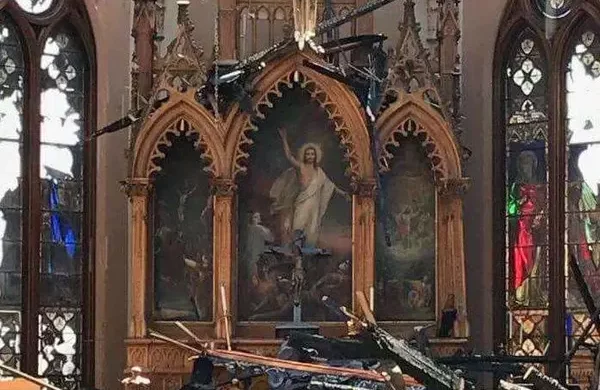
The Historic Trinity Evangelical Lutheran Church in Milwaukee was on fire. Throughout the day and evening hours, there was a live news feed of fire destroying a once beautiful church.
Like this:
Like Loading...
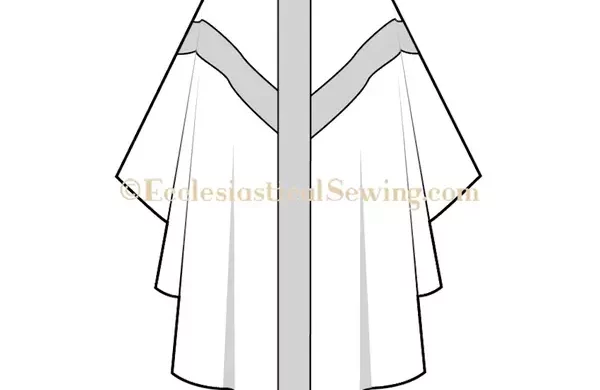
The Gothic Chasuble with the column orphrey band has shoulder seams that are different from the Y orphrey chasuble. They are considered “uneven” shoulder seams with the back seam being at a slightly different angle than the front. This allows for additional drape in the chasuble back and as the sleeves and hems hang, there is more fullness along the sides. The Gothic Chasuble with the Column Orphrey is also a longer chasuble with a 52 to 54-inch finished length. The width of this chasuble is around 54 to 56 inches, so it easily cuts on the fold of a 56 to 60-inch wide fabric.
Like this:
Like Loading...
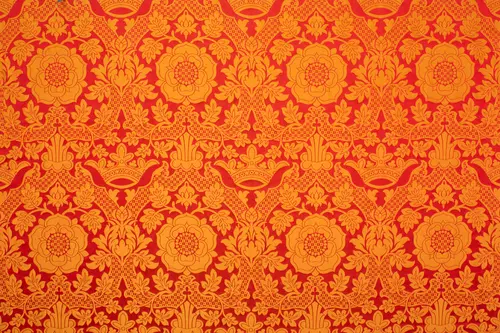
The religious brocade that we are considering today is the regal St. Margaret Liturgical Brocade fabric. This is a fabric created for use in church vestments. The design is masterfully created around the motifs of a large Tudor Rose and a Crown. Both are interspersed with vines and other floral motifs which create the impression of a large and grand pattern.
Like this:
Like Loading...
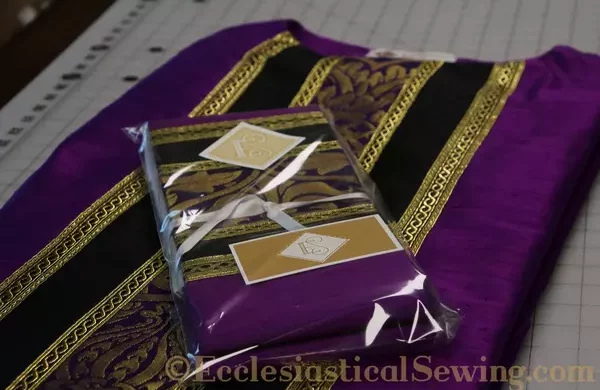
The Monastic Chasuble is a wonderful, full chasuble that is both graceful and elegant. It is suited for use in a variety of church settings. In many of the larger traditional cathedrals, altar hangings are no longer used. The chancel is often open with a large altar made from stone as in the above photo. These vast open spaces are lovely and well suited for using a Monastic Style Chasuble.
Like this:
Like Loading...
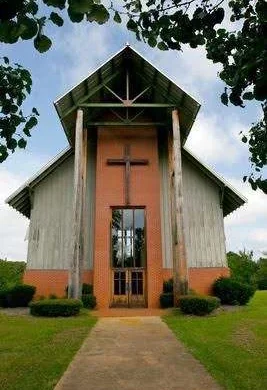
The Five Day Conference Includes several different Course Offerings: Beginning Stole Making, Advanced Stole Making, Pulpit Falls, and Monastic Chasubles. Most students will start with the Beginning Stole Making Course and move on to the Advanced Stole Making or Pulpit Falls. Course Details, kit fees, and other pertinent information are available on the conference website.
Like this:
Like Loading...
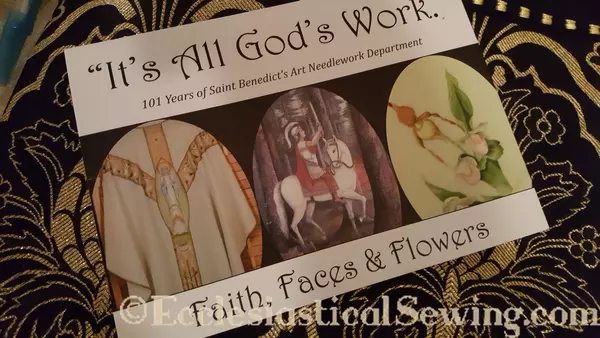
If your travel plans include a visit to Minnesota, this is an Ecclesiastical Arts Needlework Collection worth seeing. Many of the pieces in the collection are becoming fragile with age, and so, this may be the last exhibit for some of the pieces in the collection. The rose copes shown in the above photo are embroidered on a lovely white silk ground fabric. The piece is close to 100 years old or more.
Like this:
Like Loading...
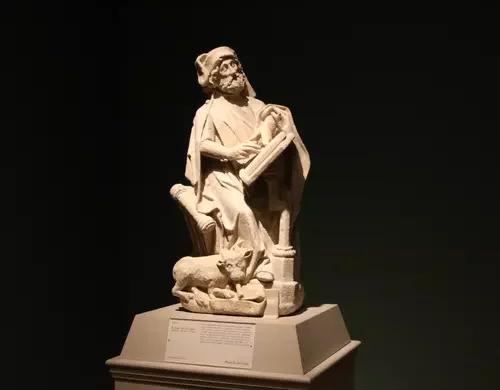
St. Luke is seated at a desk where he is busy either with his writing or creating a painting. At his feet is a bull or ox which often is used as a symbol to represent him. St. Luke is one of the Four Evangelists or writers of the Gospel accounts. The term is fitting because Evangelist means someone who proclaims the good news. The Evangelists proclaimed the good news of Christ in the Four Gospel accounts which are named after them: St. Matthew, St. Mark, St. Luke, and St. John.
Like this:
Like Loading...
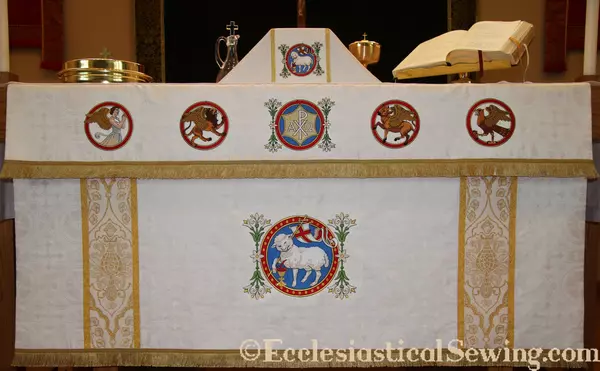
Alleluia! Christ is Risen. He is Risen indeed! Alleluia!
May the joy of our Risen Saviour live in your hearts now and forever more. Blessings and peace to all of the Ecclesiastical Sewing Family and Friends.
Like this:
Like Loading...
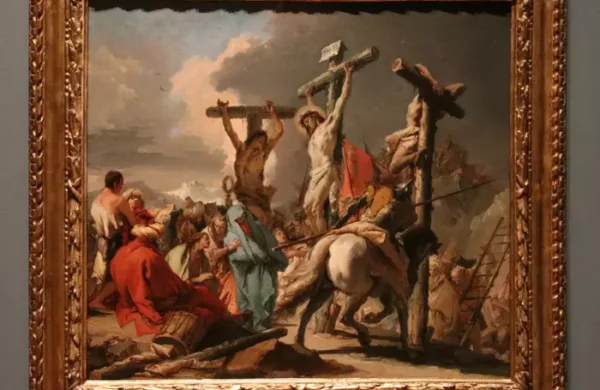
Good Friday Art: Private Collection by Carrie Roberts.
Like this:
Like Loading...
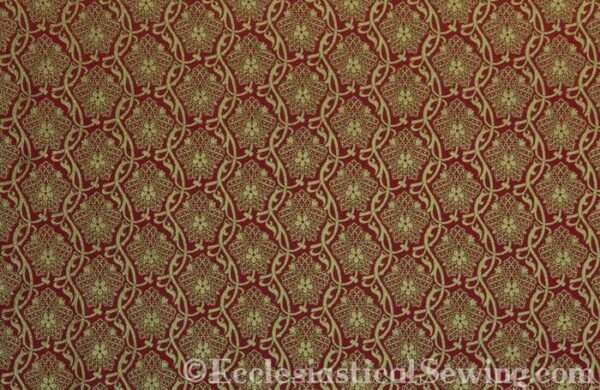
St. Hubert, designed by Sir Ninian Comper, was first produced as a liturgical fabric pattern circa 1890. This design has been recently reintroduced on a church fabric and is still lovely for use in making church vestments. As with most of Comper’s textiles, the inspiration for St. Hubert is of Netherlandish origin. This work comes from a 15th-century painting from the exhumation of St. Hubert. The fabric, made from a blend of cotton, silk, and metallic fibers, shimmers with accents of gold. While St. Hubert has a predominant right side, the fabric is also suitable for use on the “reverse” side, which makes for interesting design options
Like this:
Like Loading...
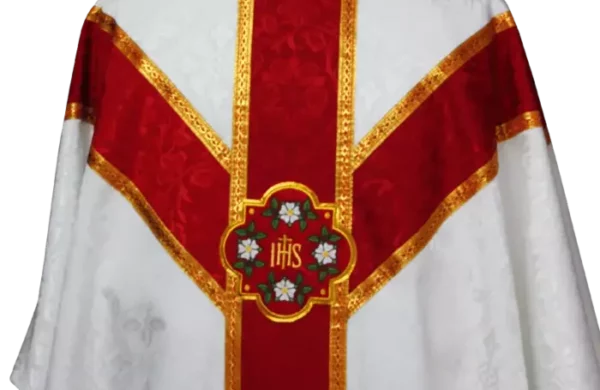
The Gothic Chasuble pattern body is a delight to sew, The pattern is printed as a full-size pattern on a large white document pattern. The chasuble pattern comes as a multi sized pattern with a small, medium, and large size. There are markings on the pattern showing placement for the “Y” orphrey bands at the shoulders. The “Y” orphrey bands are full-sized patterns. The pattern also has neckline-facing pieces.
Like this:
Like Loading...
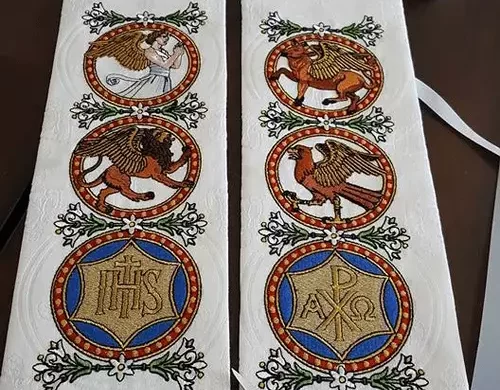
Ecclesiastical Sewing presents “The Evangelist Collection,” a vintage church embroidery designs recreated for a new era. The project, undertaken with artist Edward Riojas, involved restoring missing pieces to complete the original set. The collaboration celebrates history, and devotion, bringing these designs to a new generation for use in worship.
Like this:
Like Loading...
A special Kickstarter Campaign in the works by the Massachusetts Historical Society, arranging for an Exhibition of Historical Costumes and would like to publish a companion book that details information about the techniques, costumes, and designs that will be on display.
Like this:
Like Loading...
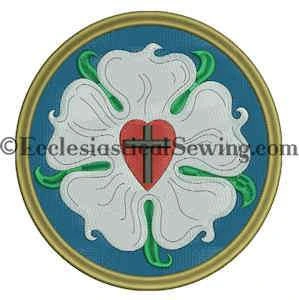
Our Luther Rose Brocade features the Luther Rose Symbol woven into the fabric. Created by Carrie R. around the fall of 2016, it was designed for the 500th Anniversary of the Protestant Reformation. Inspired by her Patonce Cross and Luther Rose Symbol, Carrie collaborated with artist Edward Riojas to perfect the design. The fabric was then sent to England for production, resulting in this unique and meaningful brocade.
Like this:
Like Loading...
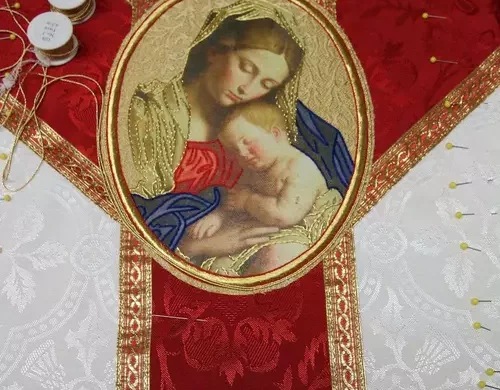
The Madonna and Child Goldwork Emblem is to be used on the back of a white Gothic chasuble. The chasuble is designed using our classic Gothic Chasuble Pattern cut with “Y” orphrey bands. The Virgin and Child design uses goldwork embroidery and colored thread embroidery embellishments on a hand-painted design. This Embroidery Design has a great deal of detailed work and requires care when applying it to a church vestment.
Like this:
Like Loading...















You must be logged in to post a comment.